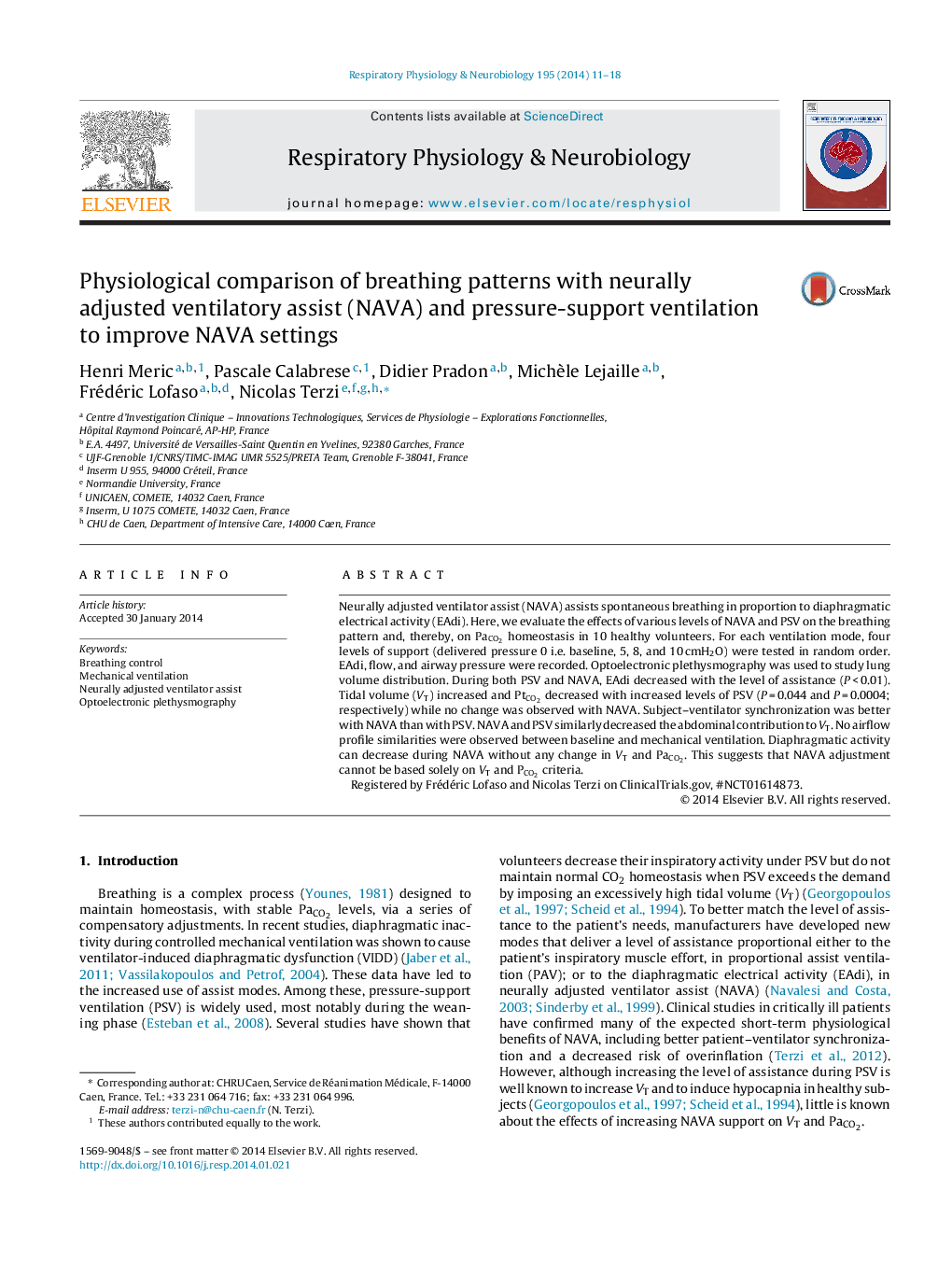| Article ID | Journal | Published Year | Pages | File Type |
|---|---|---|---|---|
| 2847057 | Respiratory Physiology & Neurobiology | 2014 | 8 Pages |
•In contrast to PSV, NAVA preserves carbon dioxide homeostasis,•Thus, overassistance during NAVA could be obtained without hypocapnia induction,•Finally identifying the optimal NAVA level remains a challenge.
Neurally adjusted ventilator assist (NAVA) assists spontaneous breathing in proportion to diaphragmatic electrical activity (EAdi). Here, we evaluate the effects of various levels of NAVA and PSV on the breathing pattern and, thereby, on PaCO2PaCO2 homeostasis in 10 healthy volunteers. For each ventilation mode, four levels of support (delivered pressure 0 i.e. baseline, 5, 8, and 10 cmH2O) were tested in random order. EAdi, flow, and airway pressure were recorded. Optoelectronic plethysmography was used to study lung volume distribution. During both PSV and NAVA, EAdi decreased with the level of assistance (P < 0.01). Tidal volume (VT) increased and PtCO2PtCO2 decreased with increased levels of PSV (P = 0.044 and P = 0.0004; respectively) while no change was observed with NAVA. Subject–ventilator synchronization was better with NAVA than with PSV. NAVA and PSV similarly decreased the abdominal contribution to VT. No airflow profile similarities were observed between baseline and mechanical ventilation. Diaphragmatic activity can decrease during NAVA without any change in VT and PaCO2PaCO2. This suggests that NAVA adjustment cannot be based solely on VT and PCO2PCO2 criteria.Registered by Frédéric Lofaso and Nicolas Terzi on ClinicalTrials.gov, #NCT01614873.
